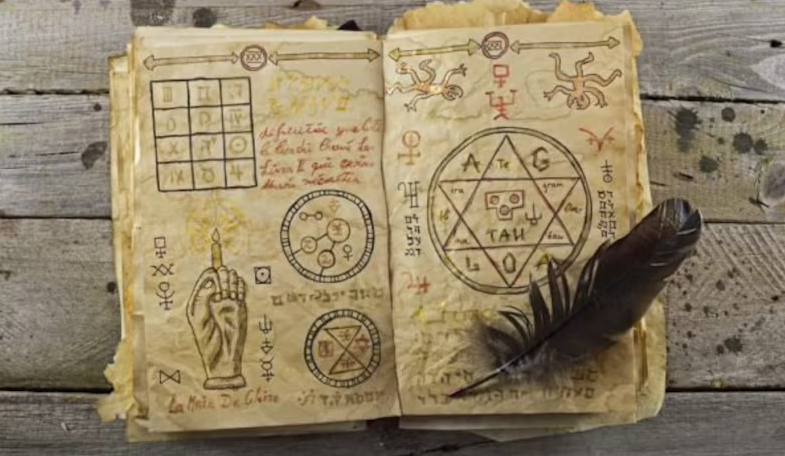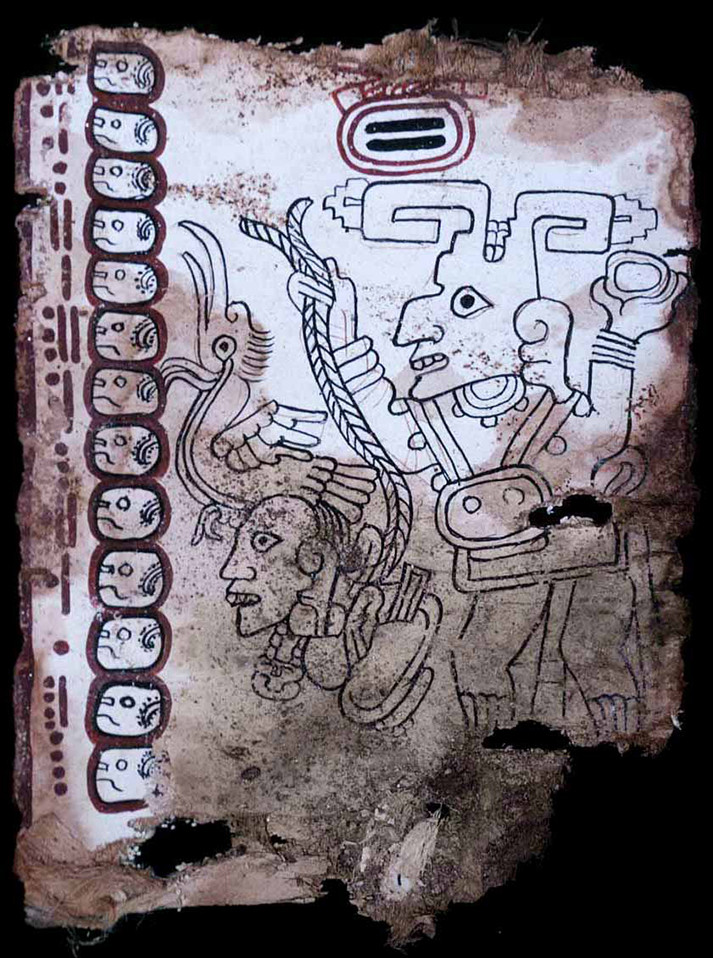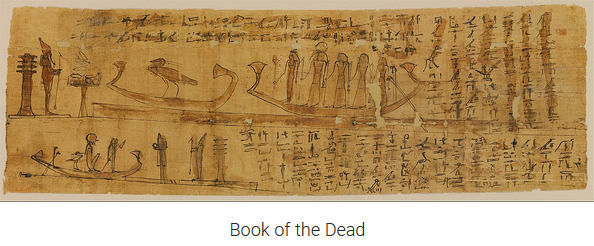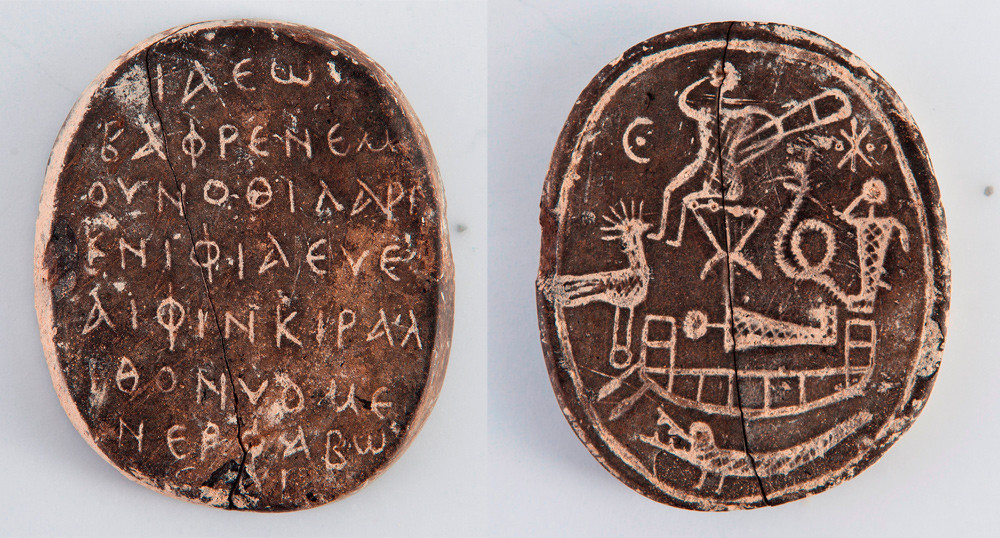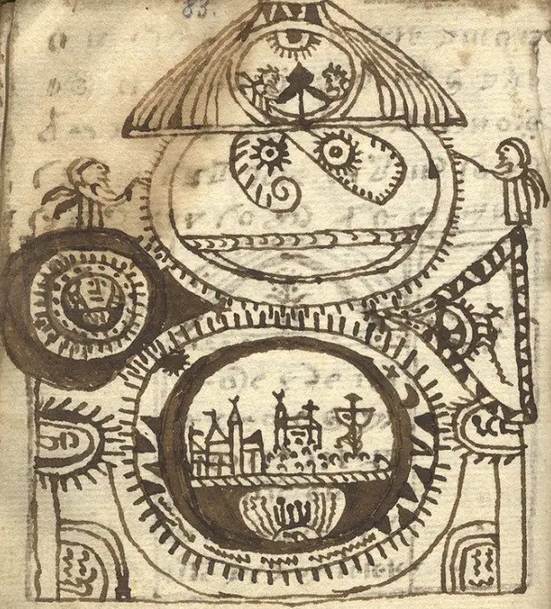The Voynich manuscript is an illustrated codex hand-written in an unknown script referred to as 'Voynichese'. Mrs. Irena Hanzíková from Jičín is said to have translated the Voynich manuscript, it should be written in old Czech (the territory of Bohemia in Central Europe). One that no scientists or programs in the world could decipher. The mysterious book contains 240 pages of preserved parchment, it is estimated that there were originally 272 pages. Most of the pages have fantastical illustrations or diagrams, some crudely coloured, with sections of the manuscript showing people, fictitious plants, astrological symbols, etc. The text is written from left to right. The manuscript is named after Wilfrid Voynich, a Polish-Lithuanian book dealer who purchased it in 1912.
It is interesting to me that again several tens of pages were kept secret from the public, here you can download a scan with only 209 pages.
https://www.holybooks.com/...
It is interesting to me that again several tens of pages were kept secret from the public, here you can download a scan with only 209 pages.
https://www.holybooks.com/...
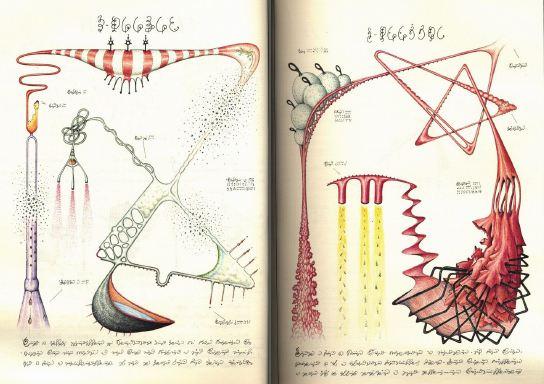
Download: Voynich Manuscript PDF & Codex Serahinianus PDF
Download the two most strange books ever written: The Voynich Manuscript PDF and CODEX Serahinianus . You can download them here in full-length PDF for free!
https://www.holybooks.com/voynich-manuscript-codex-serahinianus-pd/
01:41 PM - May 10, 2023
Only people mentioned by AmalLikesToPlay in this post can reply
eva amálka k......
@AmalLikesToPlay
10 May, 02:56
In response eva amálka k...... to her Publication
The Book of Soyga — John Dee’s Mysterious Book of Magic that had a propensity for disappearing
In 1551, the famed Elizabethan occultist John Dee acquired a mysterious book of magic. Much of the 200-page book was written in discernable Latin, detailing incantations and rituals to perform magic and other bizarre rituals. However, mixed into this Latin text were 40,000 letters arranged in odd patterns across 36 tables. These patterns seemed to form a code. But Dr. Dee could not fathom it and he roped in Edward Kelley for help.
Dee lost the book for a time, only to rediscover it after some years. However, after his death, the mysterious manuscript disappeared entirely, and scholars were only aware of its existence through references in Dee’s diaries.
In 1994, the book “reappeared” when a scholar found it within the archives of the British Library. Quite how it got there is unknown and the exact meaning of its contents is as mysterious today as they were to Dr. Dee.
In 1551, the famed Elizabethan occultist John Dee acquired a mysterious book of magic. Much of the 200-page book was written in discernable Latin, detailing incantations and rituals to perform magic and other bizarre rituals. However, mixed into this Latin text were 40,000 letters arranged in odd patterns across 36 tables. These patterns seemed to form a code. But Dr. Dee could not fathom it and he roped in Edward Kelley for help.
Dee lost the book for a time, only to rediscover it after some years. However, after his death, the mysterious manuscript disappeared entirely, and scholars were only aware of its existence through references in Dee’s diaries.
In 1994, the book “reappeared” when a scholar found it within the archives of the British Library. Quite how it got there is unknown and the exact meaning of its contents is as mysterious today as they were to Dr. Dee.
Notice: Undefined index: tg1tga_access in /home/admin/www/anonup.com/themes/default/apps/timeline/post.phtml on line 396
eva amálka k......
@AmalLikesToPlay
10 May, 02:49
In response eva amálka k...... to her Publication
The Grolier Codex — the Oldest Mesoamerican Manuscript Whose Discovery and Meaning Are Shrouded in Mystery
Mayan culture flourished from 2000 BC until the Spanish invasion of 1697 AD. The culture left a wealth of evidence behind, including great ceremonial centers such as Tikal in Guatemala. Here, evidence of Mayan art and science were preserved, including astronomical calendars and the Mayan’s sophisticated hieroglyphic-based writing system, carved into the stone of public monuments. Four Mayan books also survive: The Dresden Codex, The Madrid Codex, the Paris Codex, and the mysterious Grolier codex.
The mystery of the Grolier or the Maya Codex of Mexico lies began with the circumstances of its discovery. The mysterious manuscript was discovered in a Mexican cave in the 1960s, along with a turquoise mask.
But only 60% of Mayan writing is understood and 11 pages of the book are lost. Part of the book relates to the movement of the planet Venus, many of unknown Mayan deities.
Mayan culture flourished from 2000 BC until the Spanish invasion of 1697 AD. The culture left a wealth of evidence behind, including great ceremonial centers such as Tikal in Guatemala. Here, evidence of Mayan art and science were preserved, including astronomical calendars and the Mayan’s sophisticated hieroglyphic-based writing system, carved into the stone of public monuments. Four Mayan books also survive: The Dresden Codex, The Madrid Codex, the Paris Codex, and the mysterious Grolier codex.
The mystery of the Grolier or the Maya Codex of Mexico lies began with the circumstances of its discovery. The mysterious manuscript was discovered in a Mexican cave in the 1960s, along with a turquoise mask.
But only 60% of Mayan writing is understood and 11 pages of the book are lost. Part of the book relates to the movement of the planet Venus, many of unknown Mayan deities.
Notice: Undefined index: tg1tga_access in /home/admin/www/anonup.com/themes/default/apps/timeline/post.phtml on line 396
eva amálka k......
@AmalLikesToPlay
10 May, 02:18
In response eva amálka k...... to her Publication
The Egyptian Handbook of Ritual Power-a Book of Magic That Conceals Secrets of a !Lost Christian Sect!
Ancient Egyptian texts abound. The Pyramid Texts and The Book of the Dead are amongst the oldest Egyptian manuscripts, detailing spells and religious rituals relating to death and the afterlife.
The Egyptian Handbook of Ritual Power is a 20-page parchment book written in Coptic, a Greco-Egyptian language first developed in the 2nd century BC. It contains many of the spells and curses common to other texts. However, the book also includes references to a mysterious central figure called Baktiotha-“the great one…..who is lord over the forty and nine kinds of serpents” who is not found in any other text.
Baktiotha is even more puzzling as he sits side by side with Christian figures such as Christ and curiously, Seth, the third son of Adam and Eve, who in one invocation is “Seth, Seth, the living Christ.”
https://www.holybooks.com/...
Ancient Egyptian texts abound. The Pyramid Texts and The Book of the Dead are amongst the oldest Egyptian manuscripts, detailing spells and religious rituals relating to death and the afterlife.
The Egyptian Handbook of Ritual Power is a 20-page parchment book written in Coptic, a Greco-Egyptian language first developed in the 2nd century BC. It contains many of the spells and curses common to other texts. However, the book also includes references to a mysterious central figure called Baktiotha-“the great one…..who is lord over the forty and nine kinds of serpents” who is not found in any other text.
Baktiotha is even more puzzling as he sits side by side with Christian figures such as Christ and curiously, Seth, the third son of Adam and Eve, who in one invocation is “Seth, Seth, the living Christ.”
https://www.holybooks.com/...
Notice: Undefined index: tg1tga_access in /home/admin/www/anonup.com/themes/default/apps/timeline/post.phtml on line 396
eva amálka k......
@AmalLikesToPlay
20 May, 08:50
In response eva amálka k...... to her Publication
Baktiotha-“the one who is lord over the forty and nine kinds of serpents” 49=13
Greek Palindrome
The 1,500-year-old amulet measures 1.4in by 1.6in and contains a 59-letter inscription in Greek that reads the same backwards as it does forwards. It translates to: “Yahweh is the bearer of the secret name, the lion of Re secure in his shrine.” 59=14
What do you think? Does it have something to do with "their" ("third" false offspring genetic modified from the Cain bloodline) altered DNA and our original human DNA?
I think so. https://anonup.com/thread/...
14 (5) is more than 13 (4), right?
(just a rhetorical question)
Greek Palindrome
The 1,500-year-old amulet measures 1.4in by 1.6in and contains a 59-letter inscription in Greek that reads the same backwards as it does forwards. It translates to: “Yahweh is the bearer of the secret name, the lion of Re secure in his shrine.” 59=14
What do you think? Does it have something to do with "their" ("third" false offspring genetic modified from the Cain bloodline) altered DNA and our original human DNA?
I think so. https://anonup.com/thread/...
14 (5) is more than 13 (4), right?
(just a rhetorical question)
Notice: Undefined index: tg1tga_access in /home/admin/www/anonup.com/themes/default/apps/timeline/post.phtml on line 396
eva amálka k......
@AmalLikesToPlay
09 July, 12:51
In response eva amálka k...... to her Publication
The five parts of the Egyptian soul were the Ren, the Ba, the Ka, the Sheut, and the Ib.
The Ren was the name given to a person at birth. Egyptians believed it was part of a person's soul and that it would live for as long as that name was spoken or the person remembered.
The Sheut was the person's shadow or silhouette. Egyptians believed that the shadow, somehow, contained part of the essence of the person.
The Ib was a metaphysical heart and to ancient Egyptians it was the focus of emotion, thought, will and intention. They understood it as the seat for the soul.
The Ba was the notion of personality. Everything that makes a person unique.
The Ka was the vital fire or spark, that distinguishes living people from dead (warm vs. cold).
--Kreann
The Ren was the name given to a person at birth. Egyptians believed it was part of a person's soul and that it would live for as long as that name was spoken or the person remembered.
The Sheut was the person's shadow or silhouette. Egyptians believed that the shadow, somehow, contained part of the essence of the person.
The Ib was a metaphysical heart and to ancient Egyptians it was the focus of emotion, thought, will and intention. They understood it as the seat for the soul.
The Ba was the notion of personality. Everything that makes a person unique.
The Ka was the vital fire or spark, that distinguishes living people from dead (warm vs. cold).
--Kreann
Notice: Undefined index: tg1tga_access in /home/admin/www/anonup.com/themes/default/apps/timeline/post.phtml on line 396
eva amálka k......
@AmalLikesToPlay
10 May, 02:03
In response eva amálka k...... to her Publication
The Rohonc Codex — other records of blood rituals (a Late Medieval Manuscript with Hints of Ancient Cultures)
Equally indecipherable is the 448-page long Rohonc manuscript. This illustrated book first surfaced in 1839 in Hungary, after Count Gusztav Batthyany donated it to the Hungarian Academy of Science. The codex looks medieval, but its paper has dates between 1529-1540 and is unusual in that each page is watermarked with a mysterious symbol: a six-rayed star containing an anchor within a circle.
Author and origin unknown, the codex presents other mysteries. For while the style of its writing may look like old Hungarian, it consists of an unknown alphabet of around 200 symbols.
The mystery of the codex is compounded by its 87 illustrations, which depict a mix of warfare — and symbols linked to Christianity, Islam, and Hinduism.
for download here
https://www.holybooks.com/...
Equally indecipherable is the 448-page long Rohonc manuscript. This illustrated book first surfaced in 1839 in Hungary, after Count Gusztav Batthyany donated it to the Hungarian Academy of Science. The codex looks medieval, but its paper has dates between 1529-1540 and is unusual in that each page is watermarked with a mysterious symbol: a six-rayed star containing an anchor within a circle.
Author and origin unknown, the codex presents other mysteries. For while the style of its writing may look like old Hungarian, it consists of an unknown alphabet of around 200 symbols.
The mystery of the codex is compounded by its 87 illustrations, which depict a mix of warfare — and symbols linked to Christianity, Islam, and Hinduism.
for download here
https://www.holybooks.com/...
Notice: Undefined index: tg1tga_access in /home/admin/www/anonup.com/themes/default/apps/timeline/post.phtml on line 396

